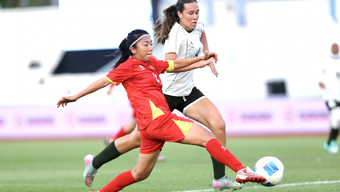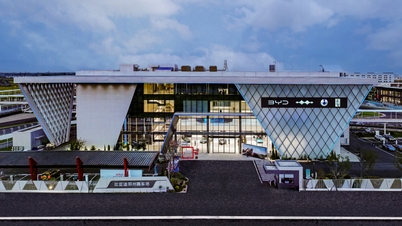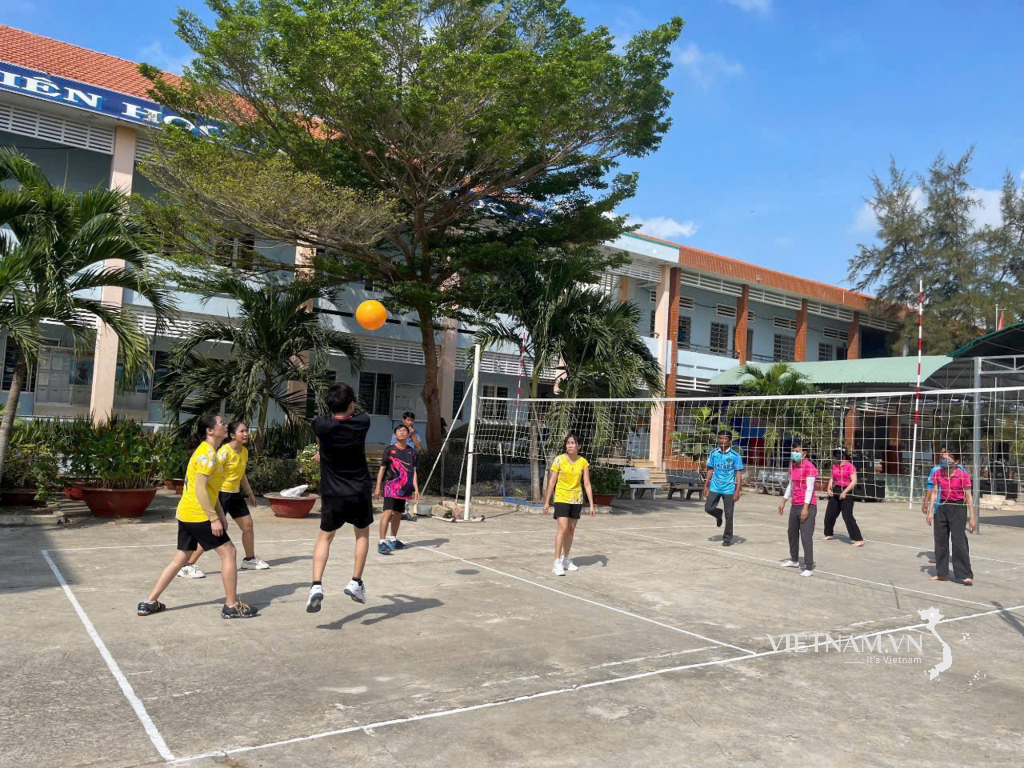
After harvesting, Mr. Binh will sort the water spinach into bundles.
Having been involved in water spinach cultivation for over 23 years, Mr. Truong Gia Binh (residing in Thanh An hamlet) said that his family used to make a living from rice farming, but it wasn't as profitable as he hoped, so he decided to switch to growing water spinach. "Water spinach is easy to grow, requires little care, and has less price risk than rice. Growers must master the technical process, especially in seed selection, pest and disease control, and fertilization timing to ensure safety and avoid affecting consumer health," Mr. Binh said.
According to Mr. Binh, growing water spinach is quite simple. Before planting, people need to remove lime and alum from the soil to eliminate pathogens. When first planting, maintain a water level of about 50cm to create a favorable environment for the spinach to grow; the deeper the water, the better the spinach. Because of its very fast growth rate, each clump should have at least two healthy, disease-free shoots, 20-25cm long, spaced about 1m apart. After 7 days of planting, the spinach will be ready for harvest.
On average, Mr. Binh only spends about 3 million VND on capital for 1,000 square meters of water spinach. Water spinach is harvested daily and is much more efficient than rice. Each water spinach crop can yield harvests for 4-6 months if planted and cared for properly. After each harvest, fertilizer is applied to help the plants recover and produce new branches and shoots. On his 5,000 square meter water spinach farm, Mr. Binh divides it into several areas for rotational harvesting each day, averaging over 100-150 kg per day. Because traders come directly to the farm to buy the produce, he doesn't have to worry about sales. With water spinach priced at 10,000-15,000 VND/kg, after deducting all expenses, Mr. Binh's family earns 1-1.5 million VND per day.

Mr. Binh's water spinach pond provides a stable income.
Boldly converting 3,000 square meters of rice paddy land to water spinach cultivation, Mr. Cong Bang (residing in Thanh An hamlet) shared that before planting, he cleared and disinfected the land to minimize disease outbreaks, then irrigated it before sowing. The vegetables can be harvested after about 7 days, with each harvest spaced 7-10 days apart. During the care and harvesting process, if the density is too low, he cuts off the tops and replants to maintain the density and achieve the highest possible yield.
After several water spinach harvests, he accumulated experience. “Growing water spinach requires low investment, mainly labor for care, but the income is many times higher than growing rice. On average, my family harvests about 1 ton of water spinach per month,” Mr. Bang said.

The commune's Farmers' Association regularly visits and provides technical support for water spinach cultivation to households in the area.
According to Mr. Duong Hoang Chau, Vice Chairman of the An Binh Commune Farmers' Association, the model of growing water spinach on low-yield rice land, implemented by Mr. Binh's family, has become a model for replication in the locality. Currently, there are 15 households in the commune growing water spinach on an area of 5 hectares.
Growing water spinach not only improves household economics but also provides employment for many local laborers. Recently, the Farmers' Association of the commune, in coordination with the district's agricultural extension station and plant protection station, has provided technical support on cultivation, pesticide use, and plant care and disease control. This has enabled households to understand and apply basic techniques to production, resulting in high efficiency.
Dao Nhu
Source




![[Image] Central Party Office summarizes work in 2025](/_next/image?url=https%3A%2F%2Fvphoto.vietnam.vn%2Fthumb%2F1200x675%2Fvietnam%2Fresource%2FIMAGE%2F2025%2F12%2F18%2F1766065572073_vptw-hoi-nghi-tong-ket-89-1204-jpg.webp&w=3840&q=75)

























































































Comment (0)